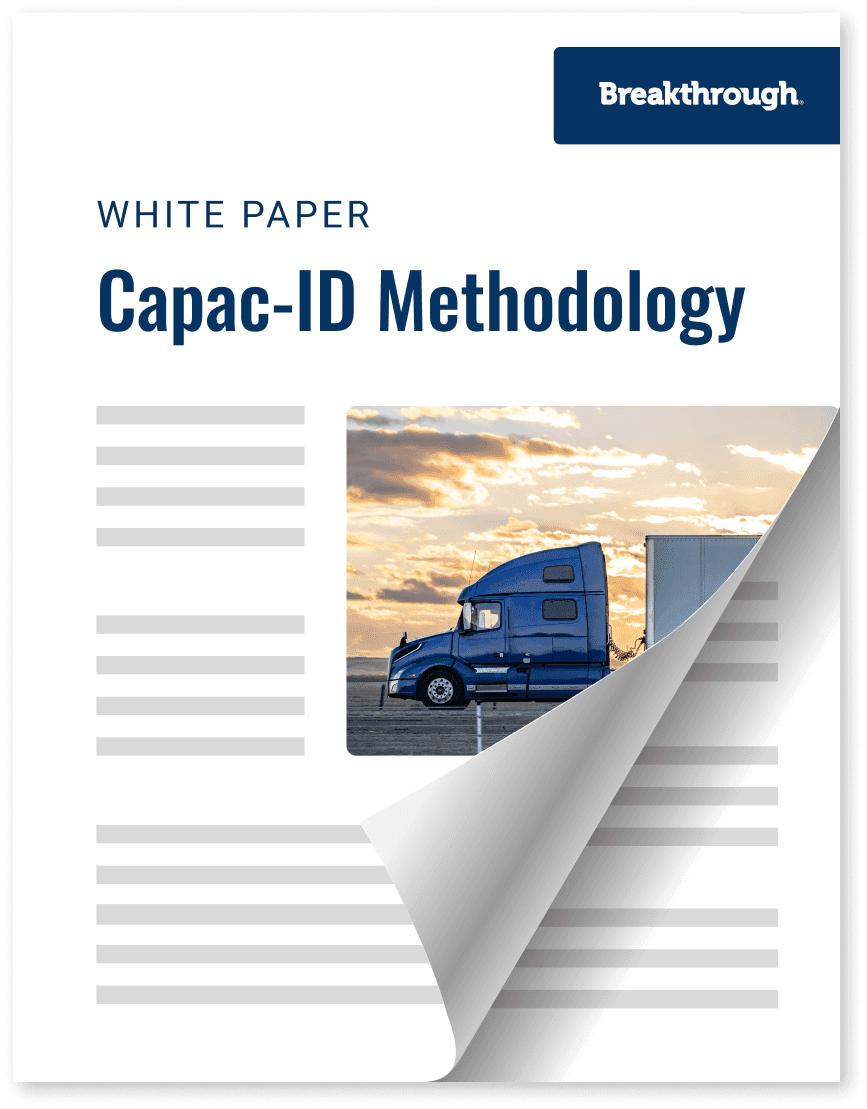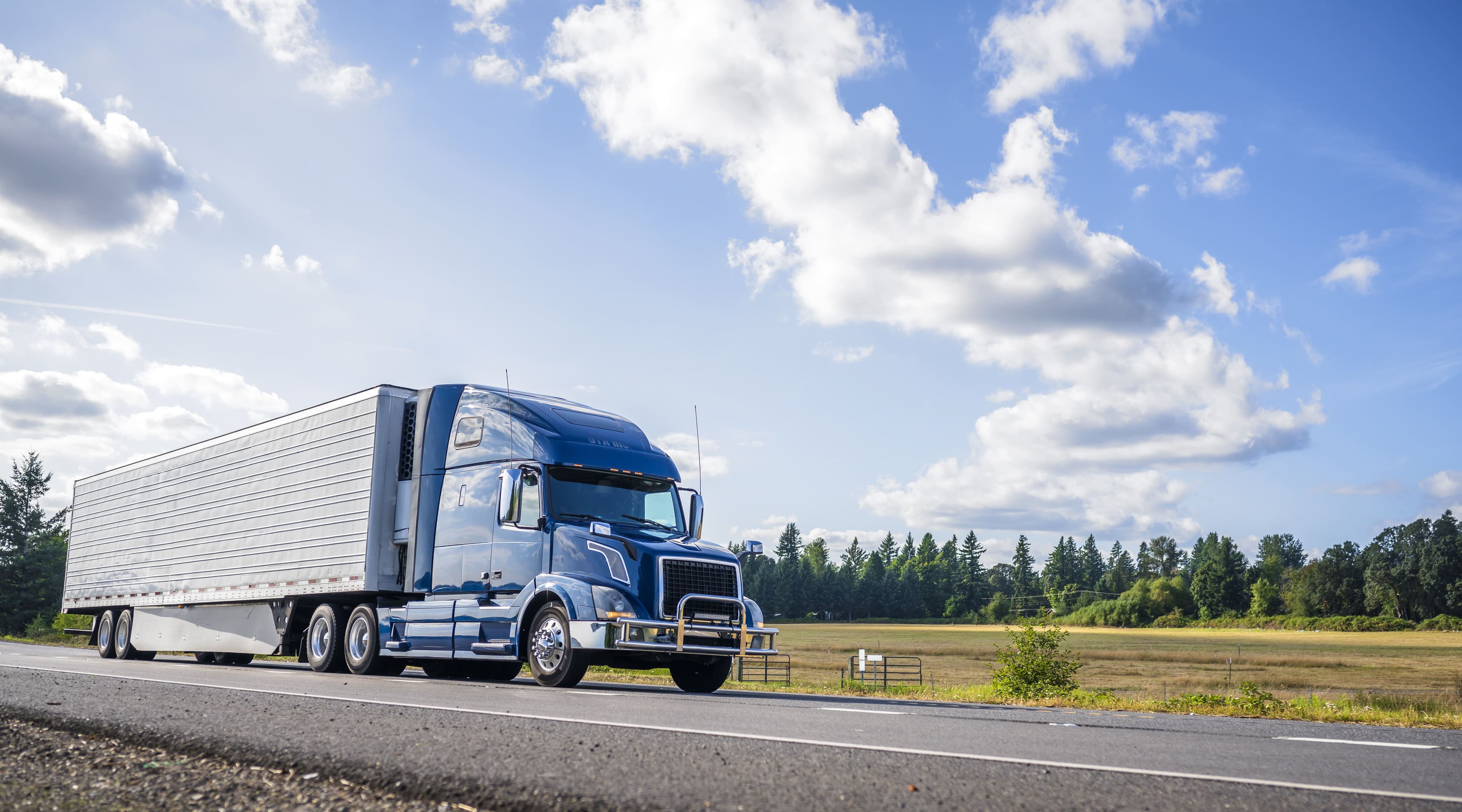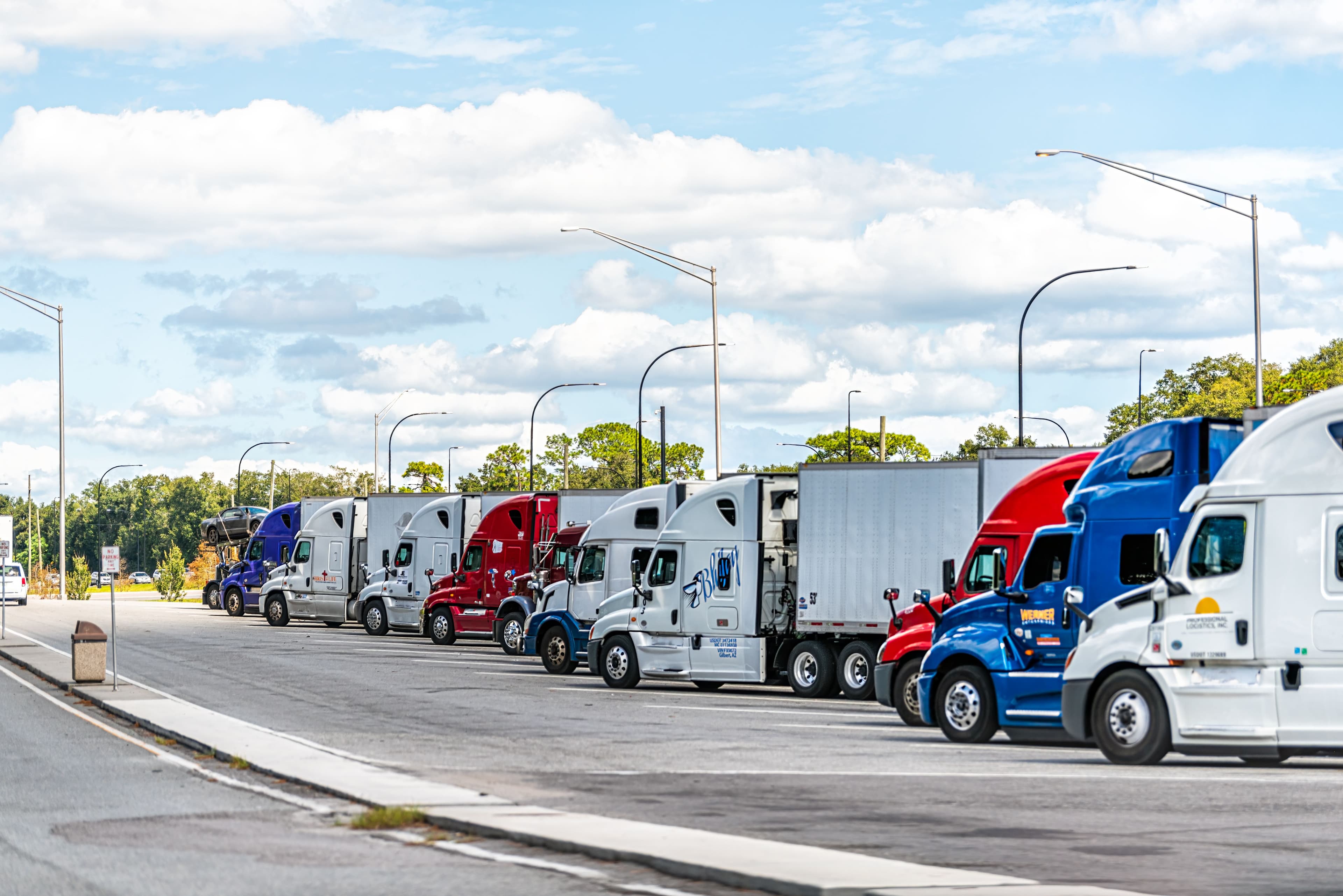Breakthrough’s Capac-ID Methodology

Trending
Top Posts
6 min read
February 23, 2021

Share:
Table of contents
Browse the table of contents to jump straight to the part you’re looking for
These certainly have been extraordinary times since COVID-19 has impacted the world. Every aspect of our lives has been disrupted. This includes the supply chain that brings us the goods we need to maintain ourselves.
Most recently, the U.S. ports have become extremely congested which has affected rail service in turn. Much of this turmoil has to do with the increase in intermodal traffic coming to the U.S. from Asia. This stems from retailers restocking inventory that has been depleted and from a surge in demand caused by consumers switching from services to goods during COVID.
For a full analysis of how consumer spending habits have shifted and how that impacted the freight market, check out our blog.
Moreover, COVID has affected the workforces at the ports and the railroads. At first, this congestion at the ports was mainly being seen on the West Coast, but it has spread to the East Coast ports as shippers seek new avenues to bring their goods to the U.S. market.
In March 2020, when COVID first began to have a large impact on the U.S., the total loaded import containers received at the North American ports was at a yearly low of 1,266,073. This number skyrocketed to 2,053,842 in October 2020, a yearly high, and was at 1,963,501 in December. The Port of Long Beach and Los Angeles combined alone rose from 454,825 in March to 909,021 in October and was at 866,937 in December for loaded import containers. The Port of Savannah was at 154,729 in May 2020 and ballooned to 234,583 in November 2020. The Port of Savannah’s fourth-quarter total volume of loaded and empty TEUs was up 19.5% over the 4th quarter in 2019 and the Virginia ports’ volume was up 13.3% while the Port of Charleston’s 4th quarter TEU volume was up 7.2% over 2019. The major US West Coast ports had a combined 2020 4th quarter total volume of loaded plus empty TEUs of 6.51 million which is 18.4% higher than the 4th quarter of 2019. Obviously, these extreme changes placed a heavy burden on the ports in the U.S.
These massive rises in intermodal traffic at the ports have had a great impact on rail traffic that moves much of this freight from the ports inland throughout the U.S. For total intermodal units for Week 3, 2021, this spike in intermodal traffic is apparent, showing a 17.8% increase compared to this same week in 2020.
The U.S. railroads originated 117 million intermodal containers and trailers in January 2021 which is an average of 293,305 per week. This average is a record and is up 12.1% from January 2020. This is the fourth straight monthly gain of over 10% for intermodal. Changes of this magnitude likewise have tested the railroads’ ability to meet this challenge.
Upon examination of the railroad metric data reported to the Surface Transportation Board, these changes do not seem to have impacted the Class I railroads’ train speeds for intermodal traffic to a great extent. However, BNSF’s weekly average of loaded intermodal cars in revenue service that have not moved in 48 hours or greater (a daily average for the week) has changed from 111.9 for the reporting week of June 24, 2020, to 466.9 for the reporting week of January 27, 2021.
For the same time periods, BNSF also increased from a weekly average of 3.1 intermodal trains holding per day to 12.3. Similarly, NS’s weekly average of loaded intermodal cars that have not moved in 48 hours or more (also a daily average for the week) went up from 14 in June to 58 in January 2021. NS’s weekly average dwell times spiked at some of its largest terminals during this same period, including Roanoke, Macon, Conway, Atlanta, and Bellevue.
Consequently, the U.S. ports and many U.S. rail terminals have been extremely congested due to this massive increase in import volumes. In fact, as of January 29, 41 ships were anchored outside of the LA/LB Ports. Voided sailings are being announced by ocean carriers due to this port congestion. Normally, ocean carriers would add an additional ship to handle delays, but there are no idle ships at present because the fleets are fully deployed.
This incredible surge has caused a chassis tightness at many U.S. rail facilities, meaning containers cannot move until chassis are available. UP has even lessened its storage charge at the impacted facilities to accommodate this chassis imbalance. It has also resulted in a shortage of rail cars needed to move these containers.
BNSF has had congestion issues at its terminals in Southern California. This has prompted some companies to change loads to BNSF’s terminals in Stockton and Phoenix. Certain railroads have gone so far as to embargo some movements of containers because there is no capacity at the ports. This congestion has led to network imbalances which have impacted the placement of empty containers on the West Coast.
In addition, there are delays at rail yards in Atlanta and Savannah due to the port congestion and depletion of chassis. This is being caused by shippers moving shipments to East Coast ports to avoid the congestion in the West. In other words, the congestion and chassis pool issue has spread throughout the country impacting the ports and railroads.
The U.S. railroads’ employment numbers have not moved much over the last several months with the total employed in August 2020 at 117,764 and in December 2020 at 117,770. However, the December number saw an increase of 2,810 from November which may be a sign the railroads are trying to right-size to meet these congestion issues.
It does not appear that these port and rail congestion issues will be going away any time soon. It may take months and possibly longer for the intermodal network to work its way through these issues. Moreover, experts are not predicting a decrease in demand for goods this quarter, and nobody knows how the pandemic will impact the situation in the future. The system simply was not built for this type of surge in traffic and will take time to get back to some semblance of normalcy.

5 min read
January 2, 2026
Stay ahead of Q1 2026 diesel fuel tax by state adjustments. See how changes in states like MI and NJ will impact your transportation spend.
Read more
6 min read
January 1, 2026
Learn what a fleet card is, how they work, and the top fleet card benefits. Our guide explains how the right fleet card program can save you money.
Read more
5 min read
December 31, 2025
Discover how to implement a mobile fueling program that boosts fleet efficiency and cuts costs. Our guide covers evaluation, partner selection, and integration.
Read more